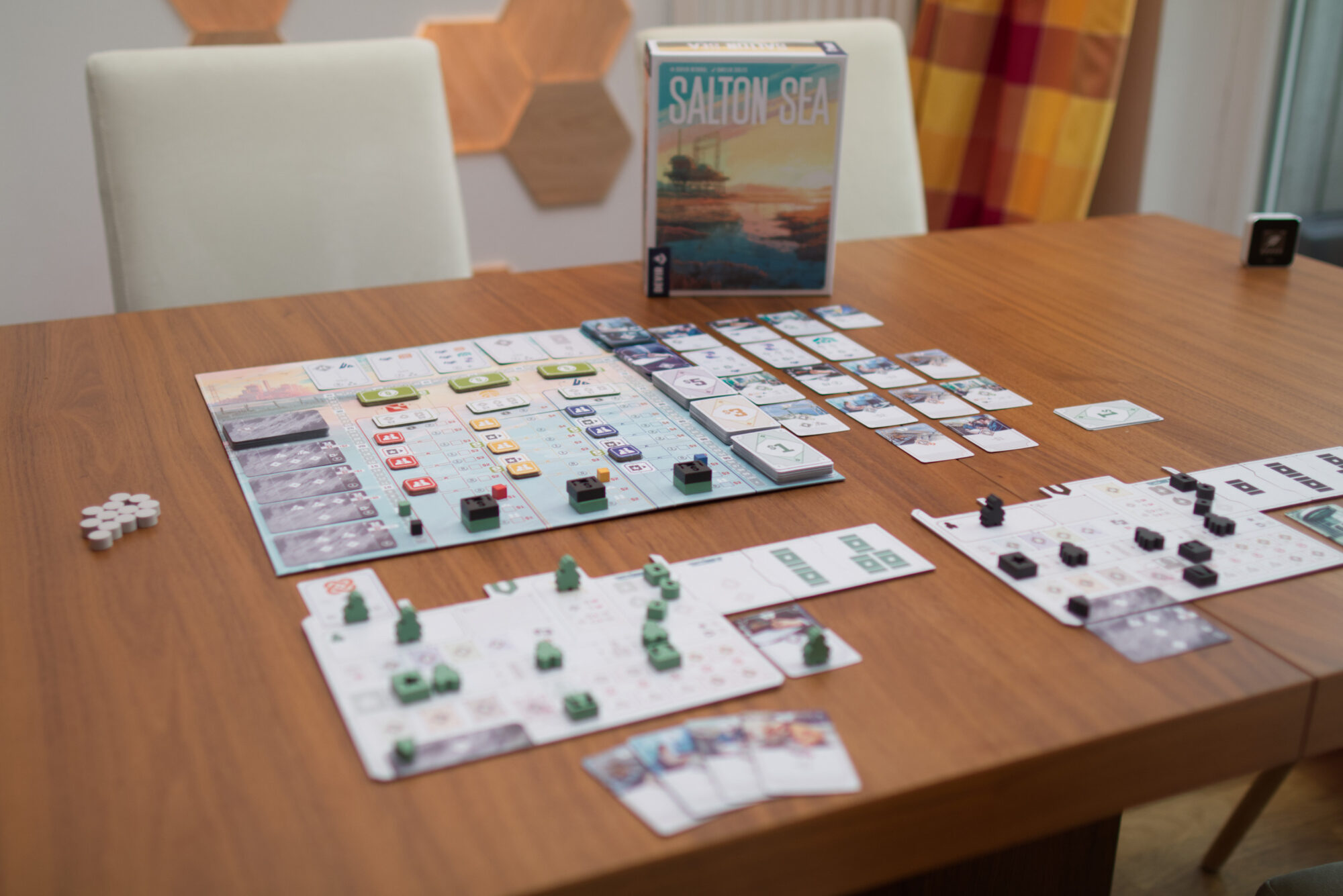In recent years, board games have made some giant leaps when it comes to their production. Just look at an ICE or Sleeping Gods: Distant Skies, they are pieces of art! Despite my interest in Lacerda games and fondness of Foundations of Rome, I’ve come to dread giant Kickstarter productions though. Sure, they might look glorious on the table, but have you tried to haul one to a game night? In public transport?
I guess I’m not the only one struggling with the ever growing board sizes and boxes as there were three main talking points when I first heard of Salton Sea: that money-action mechanism is brilliant, can you believe how small the box is, and wow that’s a lot of game for 30€. Of course there was the whole controversy regarding its theme, but others have discussed that part already way better than I ever could. But reading/watching other reviews, I felt I never got a good grasp of what Salton Sea is like to play, so let me focus on that part. Is Salton Sea any good? And how much game can you expect from this compact a box?
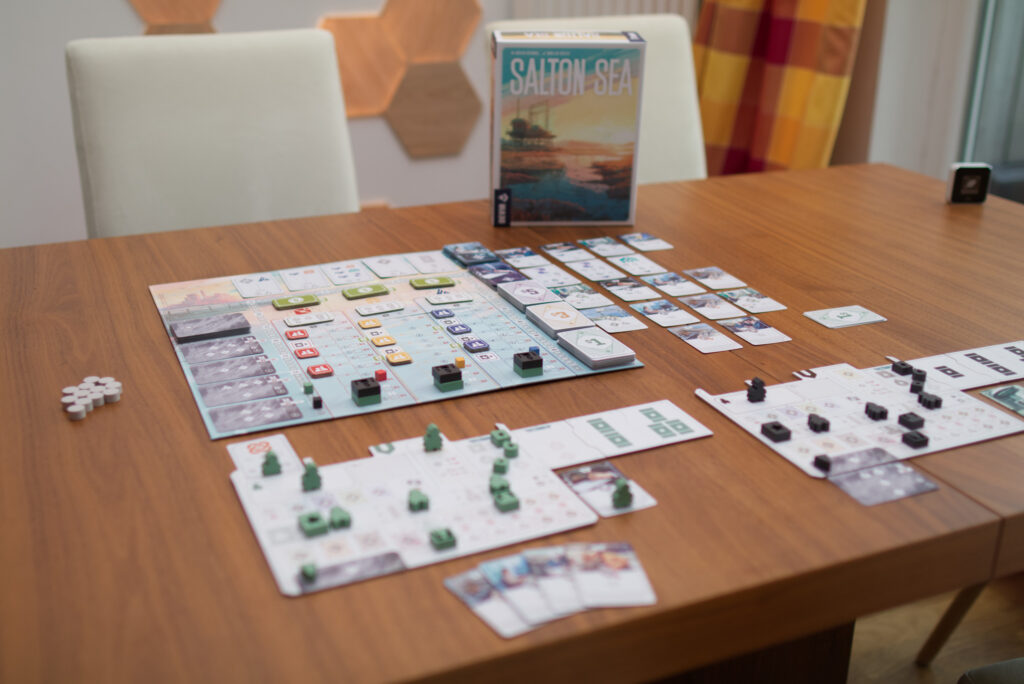
Setup
Salton Sea is one of those rare games that has an appropriately sized box, or in other words it’s filled to the brim. There are neither vast portions of empty space nor artificial inserts to tease owners into buying upgrades (I’m looking at you here, Shogun No Katana!). Instead, there is a folded main board, individual player boards, a variety of differently shaped wooden tokens, and a whole big bunch of small-format cards.
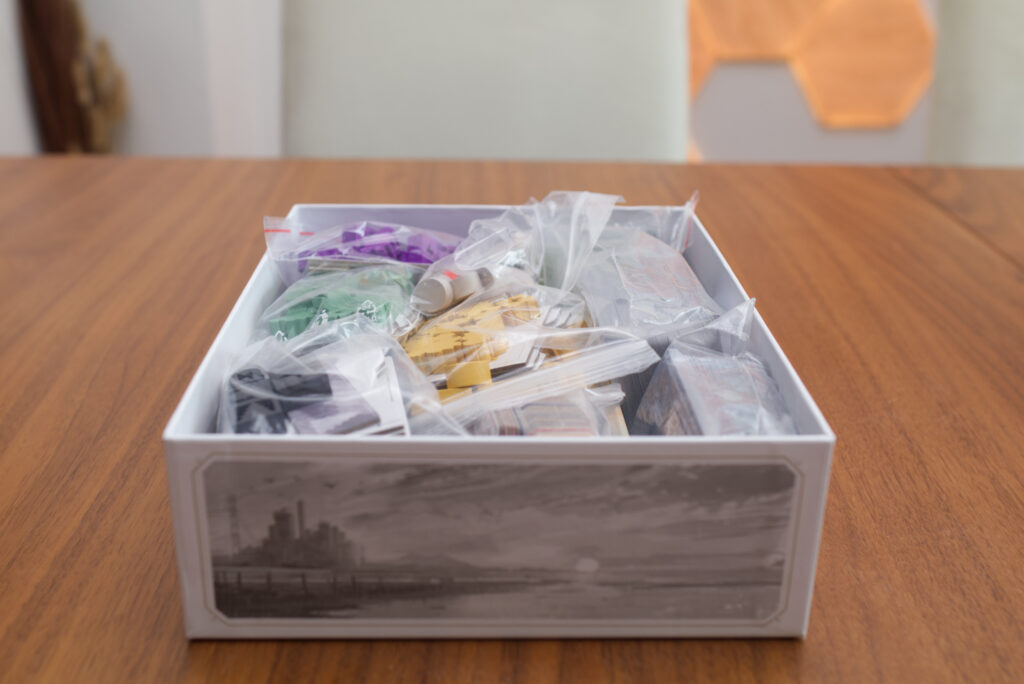
On the main board, we find a revolving market of to-be-purchased land deeds on the left, stock tracks for three anonymous companies in the centre, space for five shared goals at the top, and spots for five draw decks of which – depending on player count – a certain number of cards are revealed as common display to be picked from. Top to bottom, we have R&D upgrades, contracts which are the main source of VP, and three different denominations of money ($1, $3, $5) with actions printed on the reverse.
On the busy-looking player board, there are symbols for the various possible base actions, indents where cards can be slotted, resource tracks, and a track that unlocks more workers as well as more warehouses space to store goods. Each player has a set of wooden tokens that are used as indicators for the various tracks. So right from the get go, it’s obvious there’s a lot going on and this won’t be a 5 minute teach.
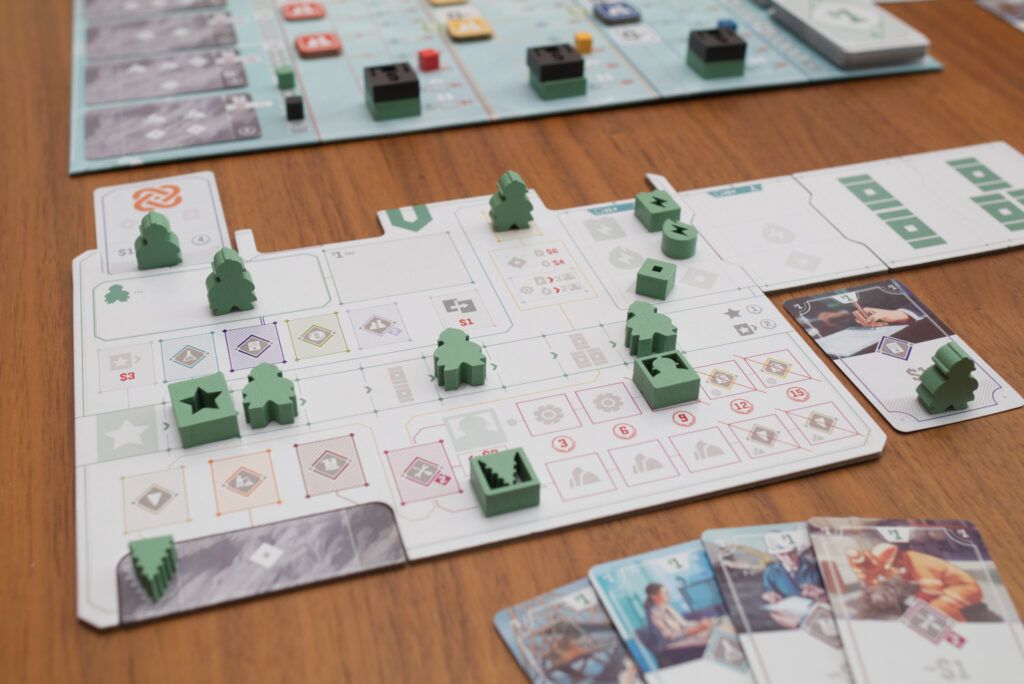
Setup isn’t too bad but it’s not great either. The most annoying part of it is that two of the decks (deeds and contracts) have tiny markings on their front that are used to separate and then stack the decks such that the more powerful cards only become available in the second half of the game. I still haven’t been able to figure out a) why these markings are not as normal on the back side of the card to make it obvious when one has forgotten to separate the cards during setup and b) why someone chose to make these markings like a millimetre in size! The other annoying part is that this is probably the tiniest case of scoring markers and score track I’ve ever seen. Sure it all has to fit in a small-ish box, but surely there were better ways to do this than putting wooden tokens only a few millimeters wide next to the one area of the board where the most movement is happening (the deed market). In some sense, it feels like someone designed a bigger board and then just said “ah heck, let’s just scale it all done by 30%, done”.
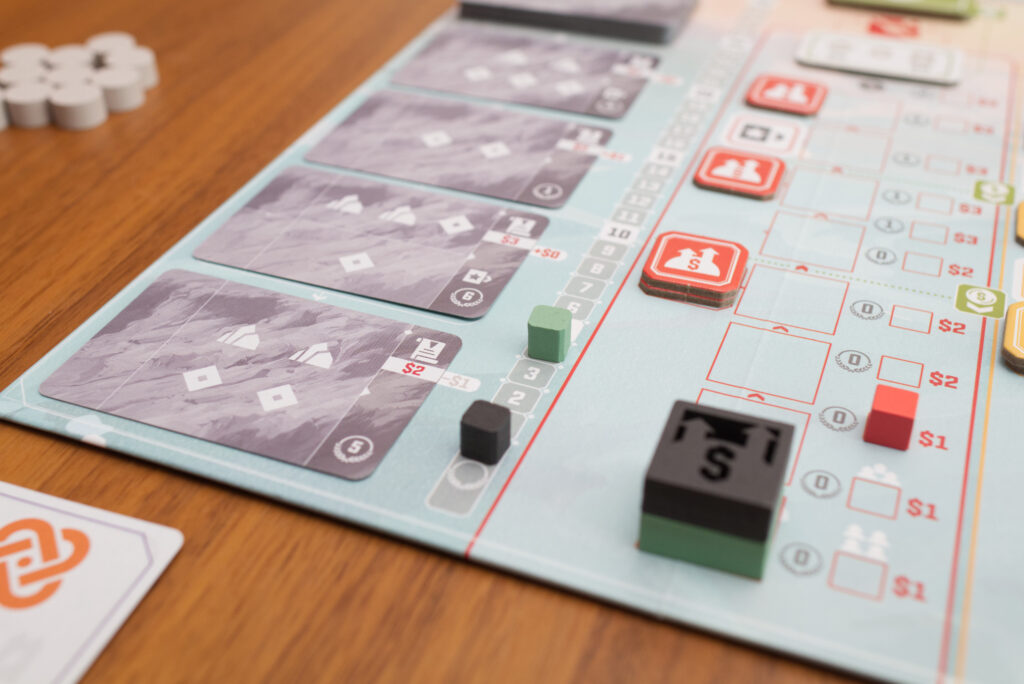
On the plus side, the illustrations on the R&D and action/money cards are quite gorgeous. It’s a stark contrast to the completely uninspired deed cards which are just grey and the player boards that are mostly white with lines on them.
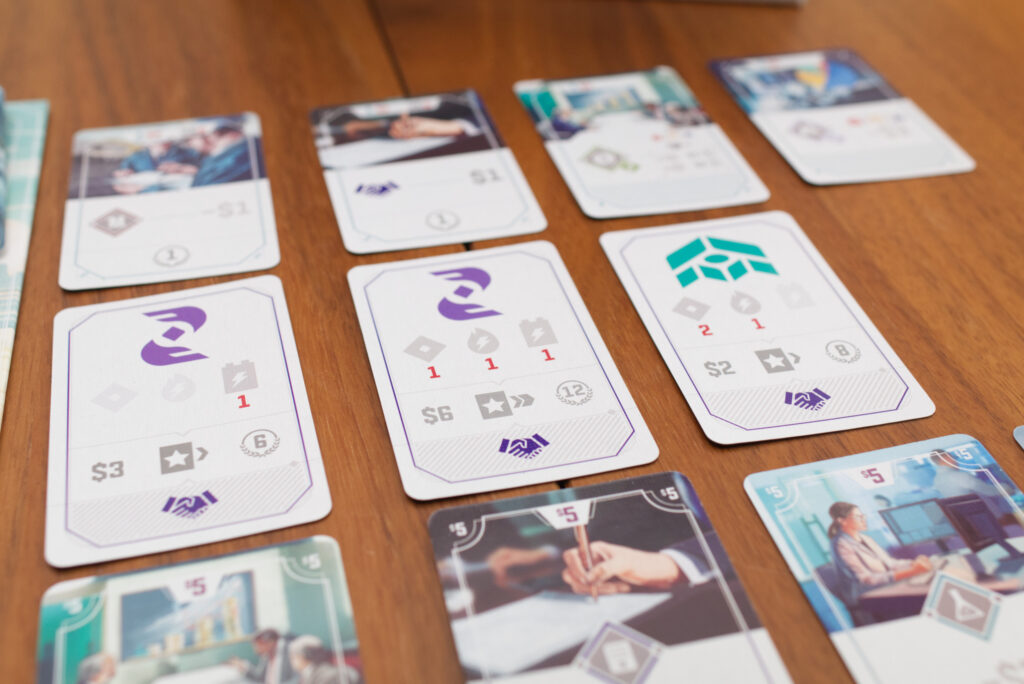
The Turn
With that out of the way, let’s get to the meat of the game! Each player is in control of a lithium mining and battery production company. Each starts with four workers that can either be placed on a basic action printed on the player board or an improved version on one of the player’s action/money cards. For example, a player could decide to extract a single piece of lithium from their land deed cards with the action space printed on their board. Or they could extract two, three, or even four with an single action if they have the respective card on their hand. The key twist in Salton Sea is that the money one earns also represents the access to improved actions one has. Sticking with the extract example, a 2-step extract action is available on some of the $1 cards, a three step on the $3 cards, and a four step on a $5 card. If a player plays the card for its action, it is blocked for that round and can no longer be spent as money, but it gets returned to the player’s hand at the end of the round. If on the other hand the player decides to spent the card as money, that card – and thus the improved action – is gone. So players are in a constant struggle of needing money to pay for things but also not wanting to spend that money to keep the actions printed on it.
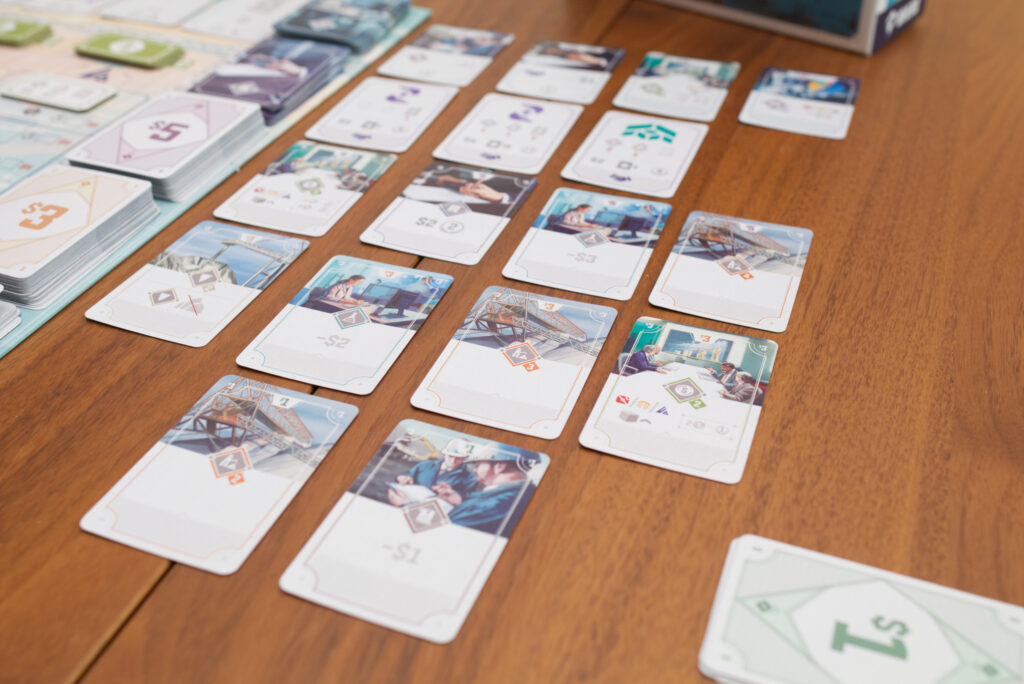
The rest is a rather typical Euro-economy. There are actions to drill, pump and turn lithium into batteries or geothermal energy, an action to buy now deeds of land to drill, one to sell goods, get contracts, pick up R&D, buy stocks, and so on. Money is of course tight, so tight in fact that the normal drill-pump-produce-sell cycle generates pretty much no profit at all. The key to making money is getting and using more and more efficient actions and thus increasing one’s profit margin. If for example one gains access to a production-action card that reduces the cost of producing batteries from $6 to $4, that’s suddenly $2 more profit. But how to make money (and thus pick up better actions) if one doesn’t have that much money to start with?
Well, during production, a player can choose to “optimise” and create an additional battery or energy “for free”. I put the last part in quotes because one doesn’t have to pay money but damages one’s own machines. This acts like a sort of loan as there is a repair action that allows one to pay for repairing the damage later on. As a result, it’s quite normal to start the game by producing stuff, optimising and thus damaging the machines to have more goods to sell and make more money … which in turn means better actions, which turns into profit, and that can be used to repair the damaged machines again.
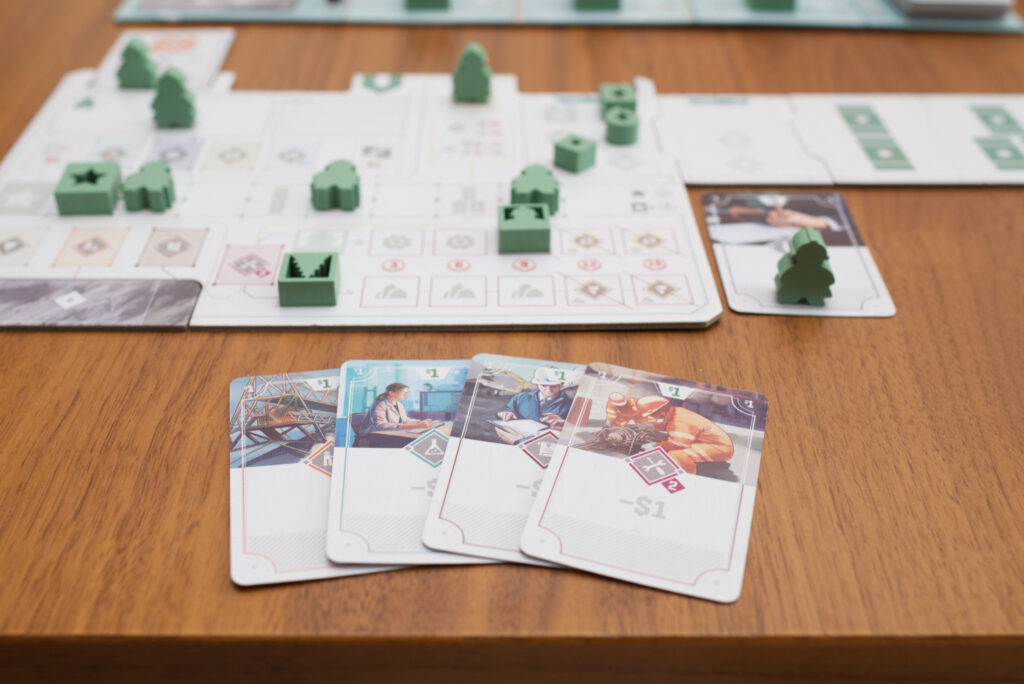
The remaining elements are standard Euro-game elements: shared goals that players compete for, R&D that provides a permanent bonus effect, recipe fulfillment contracts, limited storage space that can be extended, additional workers that can be unlocked, and stock that can be bought and turned into victory points. None of this would be special, if it wouldn’t be for this super tight economy cycle that in the beginning seems to bring in no money at all and the brilliant idea to combine actions and money into one.
There are some fun twists though: of course, there is no change if one overspends. Additionally, there is also only a limited amount of cards of each denomination available each round. One player can easily pick up all the $1 cards and then cause issues for the rest. You get an extra buck if you pick up a contact? Sounds great, terribly sorry that there are no more $1 cards available this round, ooopsy. On top of it, the shared goal cards put players into competition for variable aspects (e.g. one game, drilling particularly deep might be worth extra points while the next fulfilling certain contracts are more valuable than others). In general, there is a very strong urge to pick up particularly good cards before someone else snatches them away. Our turns usually started by everyone checking out which things in the market were particularly useful and then figuring out which might be gone before the round returns to oneself.
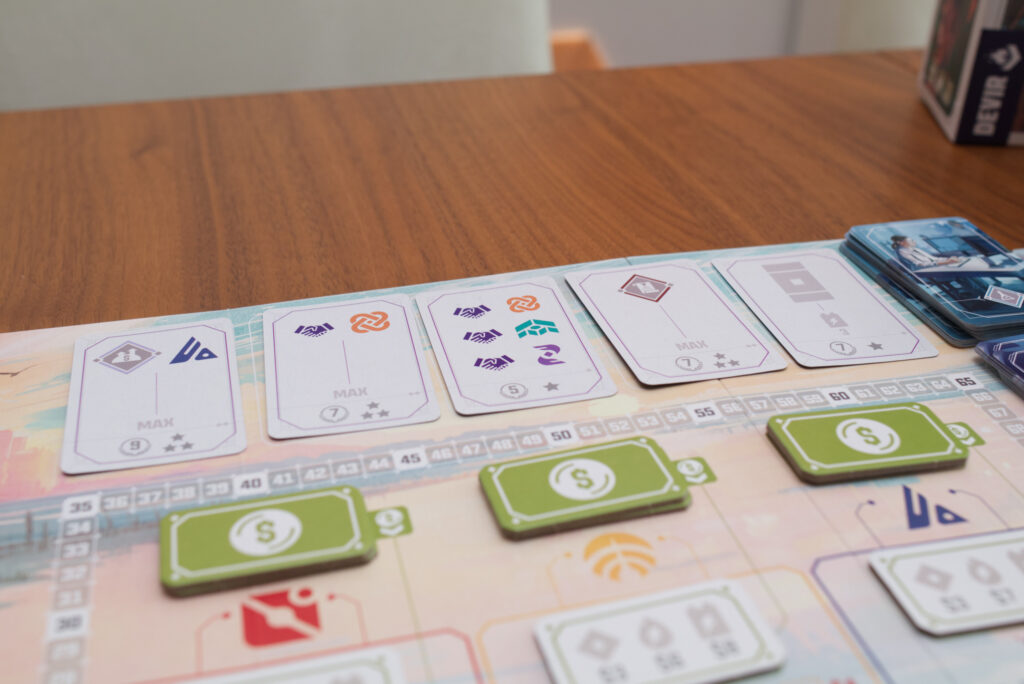
Game End
There are two ways for a game of Salton Sea to end: either the deck of deed cards is depleted – or – two out of the three companies are maxed out when it comes to selling goods to them. I’ve been playing Salton Sea solo and 2p, and the game has always ended because of the deed deck in those configurations. In general, the stock market seemed to play a rather minor role in these low player configurations with its primary use being getting some free bonus actions one receives when buying a certain amount of stock. The amount of VP generated by stocks is likely to have more significance in higher player counts, but I never had a chance to play Salton Sea with four players for example.
I also never timed our plays, but the game is more substantial than the small box leads one to believe. I would say plan 2h for your first sessions, teach not included.
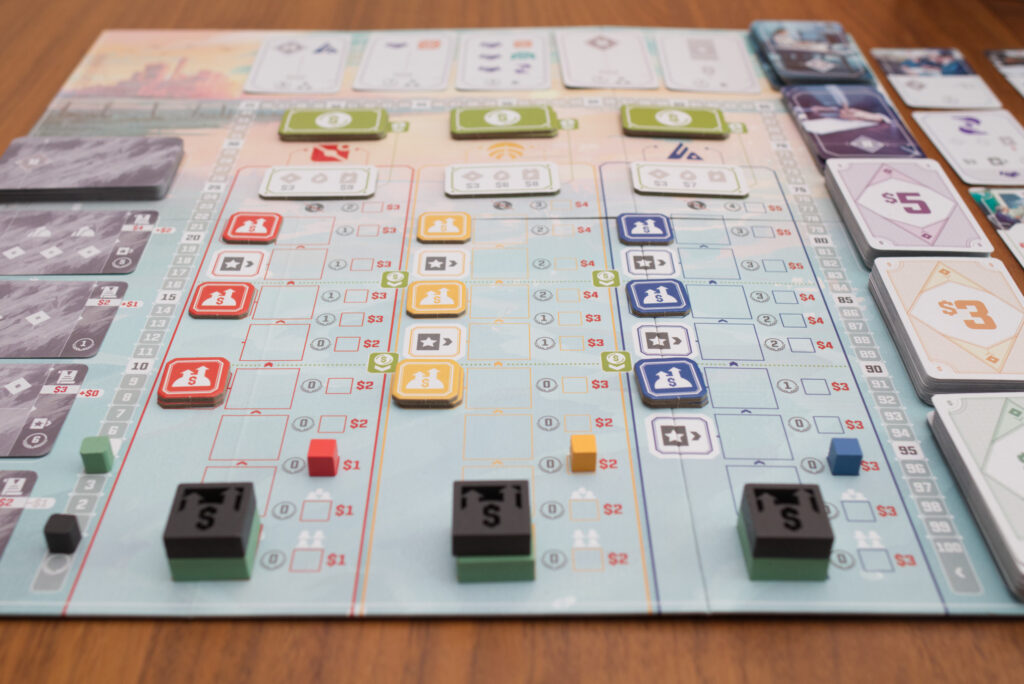
Solo Mode
Salton Sea’s solo mode comes in the form of a small automa solo deck. There are a couple of standard cards that are always in play and additional, more powerful cards with some of the later being removed at the start of the game. This is supposed to give the automa different characteristics with each play, but in my experience the automa quite often wasn’t able to actually fully utilize their improved actions. E.g. one time the automa had a card that allowed it multiple drilling steps at once but it never was in a situation where it could do more than one step. The automa works smoothly, but it always felt odd to me when a strong card came up and would ultimately fizzle into nothing. Unfortunately, this made me lose interest in playing Salton Sea solo pretty quickly, despite the automa producing competitive results in the end. Something just felt off.
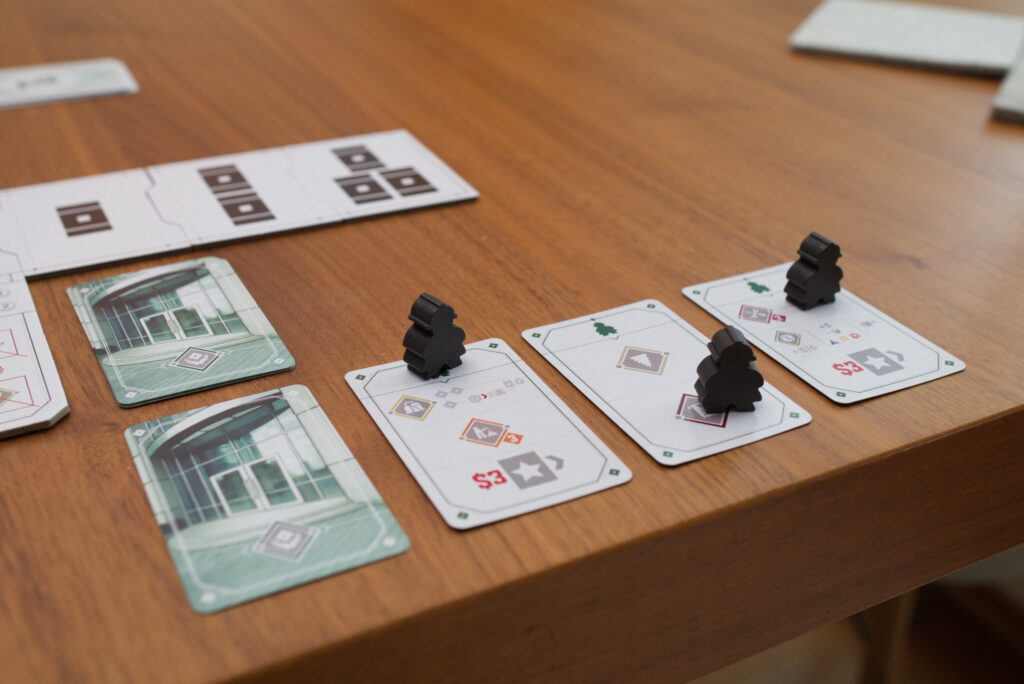
Conclusion
I really enjoyed my plays of Salton Sea, trying to figure out how the economy works and how one can actually make any serious money, let alone VP. The action/money-card mechanism works really well and created some of the most agonizing cases of me having to spent money in a board game: do I spent that $5 card and lose access to that amazing action or do I rather wait a turn on what I had planned to do, save the money for the round, and use that action one more time? Should I pick up multiple $1 to have change or rather that one $3 card with the better action on it? Questions over questions …
Salton Sea is even one of those games where you can knock yourself out of the race if you don’t pay attention. At some point, deed cards get quite expansive and contracts require more and more goods, so one needs to make sure to have a functioning economy before those come up. Speaking of which, in my plays, some of the action cards were clear favourites over others, creating natural choke points of who can earn money first and pick them up. Sometimes, it’s even opportune to sell some good for only a few bucks and waste a whole action on it, just to get that one amazing action that will kickstart your engine and you’ll be using over and over again. At other points, it’s better to be action-efficient, it all depends on what cards come up and what the other players are going for.
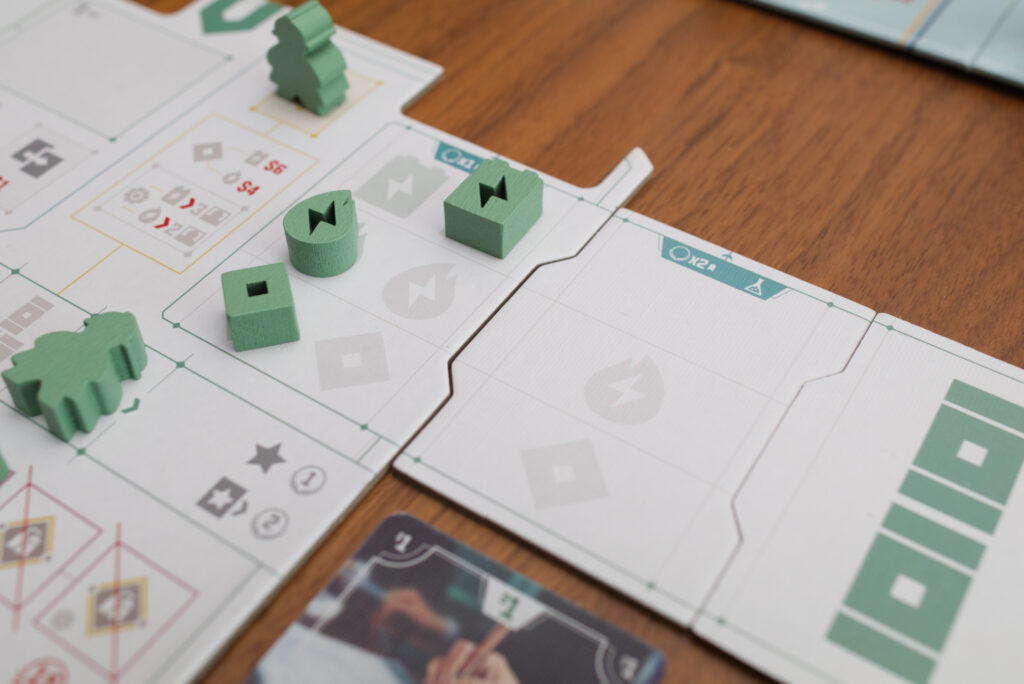
There were two main games I was reminded of while playing Salton Sea: one was the “do I use it or forever spent it?” feeling of a Watergate, but Salton Sea did that aspect way more to my liking. The other was Furnace, despite having a completely different game play. My issue with Furnace was that it had a very clever mechanism at its core, but not enough to back that mechanism up and provide long term interest. Salton Sea isn’t a 30min filler like Furnace, but it similarly is missing a reason for me to bring it to the table now that we reliably manage to unlock all workers and warehouses every game. It feels like we have seen everything Salton Sea is able to show us, which is quite sad to say this early down the road. Everyone in my playgroup was very eager to try the game, but no one seems eager to return to it. Why chose this if you can instead play a Tiletum, Darwin’s Journey, Carnegie, Nucleum, or number of other games that scratch a similar itch but do so in a more substantial way?
As a result, Salton Sea is in this weird limbo space of having enough clever ideas to stand out over a sea of generic, forgettable games but not having enough refinement and cohesion to really win hearts. The setting is interesting but it doesn’t feel thematic (really, you are buying land underneath the land you already own? Get free stocks for doing research?), the artwork is in some places amazing and in others strangely absent, the core mechanism is smart and unique but it’s blown up into a heavy game by adding all the standard Euro tropes, the small box is interesting but produces usability issues in multiple places (tiny symbols, tiny VP markers, …). Part of me wishes Salton Sea would have been a 60€ production instead of a 30€ one and there would be more substance while another part of me thinks it might have been better to cut out some of the more superfluous game elements (e.g. R&D-warehouse VP scoring, stock markets, …) and focus on its strongest positive, that brilliant, brilliant action/money-mechanism.
Don’t get me wrong, Salton Sea is working well mechanically and at its price point an amazing value proposition. It is also a rather heavy game in a 30€ box, there aren’t many of those either. I like it, I appreciate it for what it tries to do, I’m just not planning to return to it any time soon … which is what ultimately matters. I can wholeheartedly recommend anyone interested in heavy, tight Euro-economy games to try it, you’ll have a great time. If you should add a copy to your permanent collection though, that’s a different question. I for one will definitely keep an eye out for designer David Bernal’s future output.
